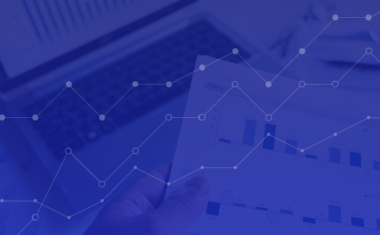7 Types of Data Visualizations and How To Use Them

The quest for valuable data has turned into a new-age gold rush in many industries. Companies mine information for insights that get turned into visualizations to help an audience understand and grasp the presented concepts. Learning to create data visualizations is a valuable skill if you decide to pursue a career as a business analyst, data scientist, or another job field that requires you to turn data into graphic concepts.
What Is Data Visualization?
Organizations with a lot of information at their disposal can quickly get overwhelmed by the amount of data available. Data analysts typically break the information down into actionable insights, which they present in the form of data visualizations. Apart from data analytics, Seeing information from a large data set laid out in a clear, concise graphic often helps company officers and business stakeholders make decisions about the future direction of an organization.
The key to great data visualization is finding the right patterns in data. From there, you need the right data visualization tools to help you drill into the information and create graphics that provide clarity to audiences who don’t have an analytical or technical background. Let’s look at some common types of data visualizations you might want to make part of your everyday work and best practices on using data visualization techniques.
Related Read: Top 13 Best Data Visualization Courses
7 Types of Data Visualizations and Steps To Use Them

1. Column Chart
Column charts, an inverse of bar charts, are a common and popular visualization tool. They’re a simple way to compare different sets of data. You can configure column charts to track various sets of data over specific periods. They’re frequently used to present sales figures or by marketers to display social media trends.
Marketers can use them to track the number of visitors on a landing page or those funneled through specific social media channels. Using consistent colors on a column chart visualization gives it more impact and helps the viewer focus on the presented information.
You can emphasize the point you wish to make by adding different colors to highlight changes over time or essential data points. It’s possible to change a data set within a column chart or bar graph without affecting other information.
Get To Know Other Data Analytics Students
Joel Antolijao
Data Analyst at FanDuel
Bart Teeuwen
Global Business Analyst, Global Talent Intelligence (GTI) at Meta
Nelson Borges
Insights Analyst at LinkedIn
2. Dashboards
Dashboard visualizations are an excellent way for business areas to clarify their work in a centralized location. They focus on specific images and details, which change as more information passes into the dashboard. A dashboard visualization makes it easy for teams to reach a consensus around the data presented to them. They help everyone collaborate and find ways to take advantage of opportunities. Dashboards make it easier to spot solutions to ongoing challenges.
Having all available data analytics in one place allows organizations to quickly gain an objective view of what’s happening in different areas of a company. Dashboards can benefit procurement teams looking to track supply management processes or a human resource department’s need to track their talent management and recruiting operations.
An effective dashboard lays everything out in a clean, simple way. Avoid trying to cram too much into one area, and make sure the information users most want to see is the most prominent while making it possible for viewers to drill down into data details as needed.
3. Heat Map
Heat maps are the go-to visual charts for showcasing a vast amount of numerical data. They’re a type of scatter plot viz in which nodes get filled in with colors that indicate a specific data point. Many heat maps use warmer colors to showcase high-value data clusters and cooler colors for those of less importance.
Many online businesses use heat maps to follow visitor behavior around a website. That helps them understand they can improve the user experience and get them to stick around certain pages longer.
Try to stick to a clear map outline that doesn’t distract from the information it presents. Multiple patterns can throw off dimension and make your heat map confusing. Instead, use one color and vary the shade to indicate how the data changes.
4. Histogram
A histogram is a form of chart used to visualize changes in a data variable over time. It groups data into bins and shows changes in data frequency. One common use for histograms is highlighting survey responses.
You could have bins showcasing responses from customers like “Highly likely” or “Highly unlikely” when asked if they would use a business’s services again. That helps companies pick out what may be working for consumers or areas that are ripe for improvement.
Make more effective histograms by adding labels with midpoints and boundaries on your X-axis. Your Y-axis can then highlight the frequencies that help your audience accurately measure the information being presented.
5. Word Cloud
Word clouds, or tag clouds, are created from data sources like a speech, online conversation, or database that highlights how many times specific words appeared in the text. More frequently used words are larger and more prominent while outliers and words used less often appear smaller. You can have the words appear in bubbles to make your point more clear.
Businesses can use text clouds to help them compare two seemingly disconnected pieces of information and find similarities that might point toward the solution to an ongoing issue. Word clouds from online customer reviews can also point to reasons for customer dissatisfaction.
Word clouds are common in media and marketing, but they’re not good for tracking things like company revenue or what might be going wrong with a system application. Use them for situations where you want to collect snapshots of feedback.
6. Tableau Highlight Table
Tableau Highlight tables don’t have the visual pizzaz of a heat map or dashboard. However, the simplicity of their design can make them a compelling visualization. You can use them to quickly identify high and low points in your data. They’re often used to complement bar and line charts.
One good use of highlight tables is to compare specific values found within a row or column. They’re good for highlighting trends in marketing or comparing sales numbers between different sales reps. Try to focus on one element at a time when working with highlight tables. Make the color scheme consistent for each worksheet. Keep your data labels clear, and don’t include unnecessary legends or other dashboard elements that make things look messy.
7. Dual Axis Chart
Dual-axis charts let you place data along two Y-axes that both use the same X-axis. These types of visualizations are good for displaying information from different data sets, where one of which is continuous. The other data set should contain information capable of being grouped into specific buckets for different categories. A dual-axis chart is good for looking for correlations among the three sets of information.
Use a dual axis chart to contrast information at different scales. It’s a way of seeing information within one graph versus going back and forth between two different ones. Avoid putting too much information into a chart, which can overwhelm the viewer. Stick to the relationship between the variables you are comparing.
Since you’re here…
Considering a career in data analytics? We can get you there. Don’t take our word for it – check out our student reviews. After just 6 months of study in our fully flexible Data Analytics Bootcamp, we’ll boost you into a job in the field, guaranteed. Get started now with our free data analytics curriculum.





![Interview Questions for Data Analyst [2022 Prep Guide]](jpg/interview-questions-for-data-analyst-2022-prep-guide-380x235.jpg)